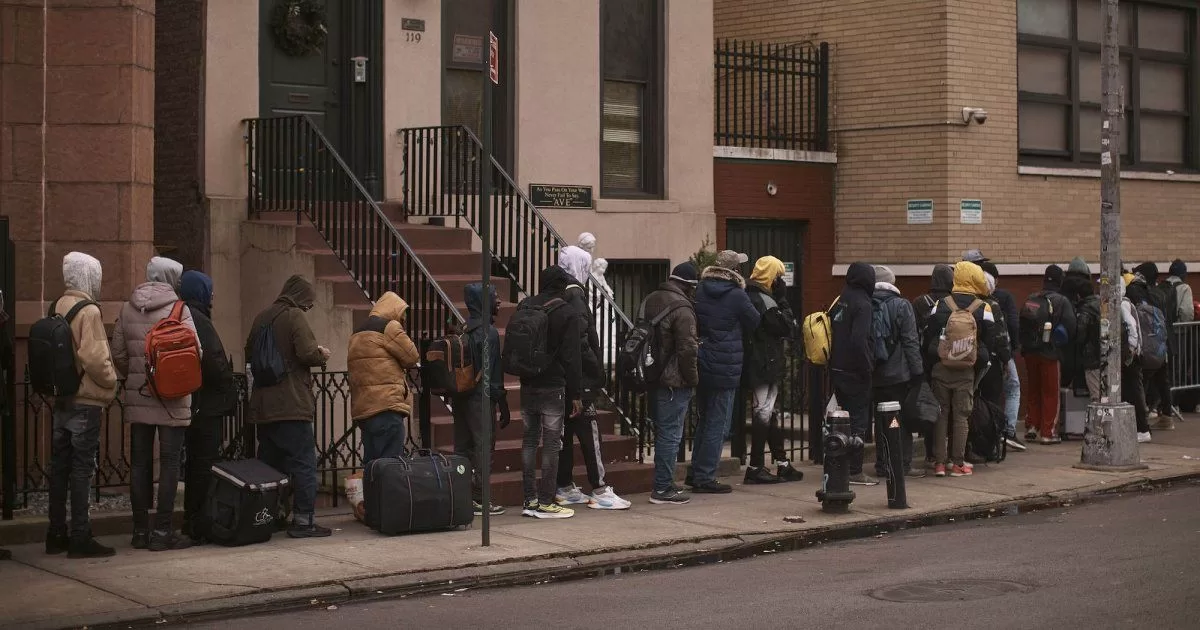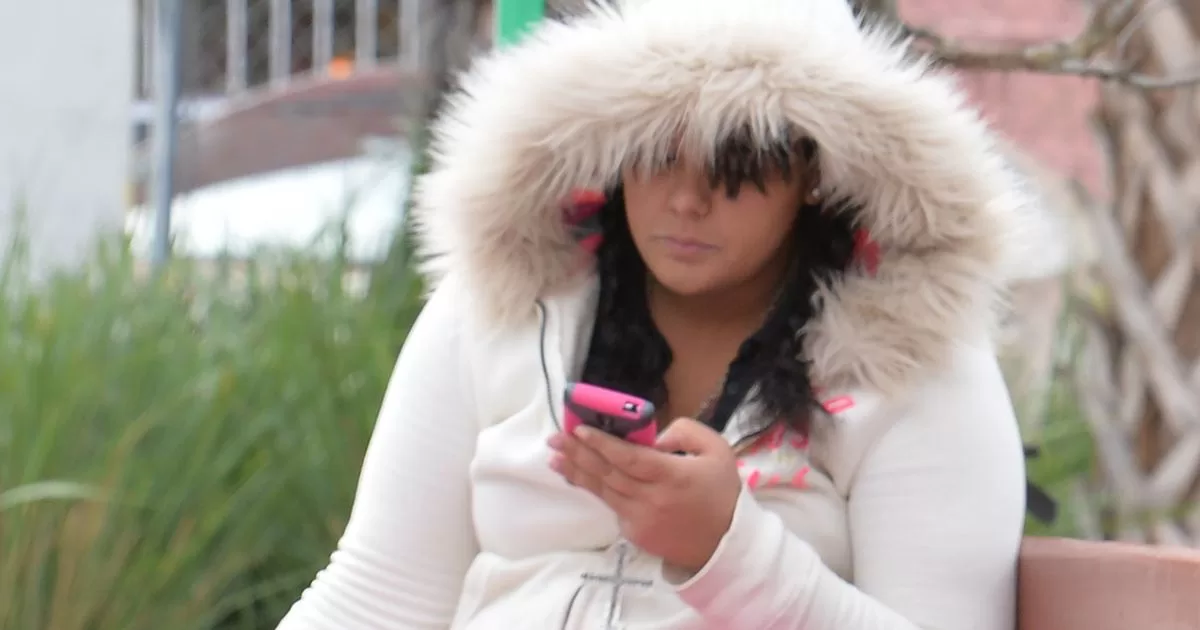The Municipal Council passed a law this Thursday that makes permanent, but much more regulated and supervisedthe ‘Open Restaurants’ program in the Big Apple, which in the last three years allowed these establishments to offer outdoor dining, occupying spaces, both on the sidewalks and in the streets. An initiative that arose during the pandemic, to guarantee social distancing and as a “lifeline” for these businesses burdened by public health restrictions.
Now, in an effort to control a plan that many continue to point to as chaotic, the legislative proposal sponsored by the Bronx councilwoman, Marjorie Velázquez, establishes a series of rules for these permits to be more streamlined and accessible in all five boroughs.
According to the bill approved in the plenary of the chamber, restaurants could continue to offer meals to the open air in the streets and avenues under a new licensing system. But those structures would have to be removed during the winter and rebuilt in the springa requirement that according to some gastronomic entrepreneurs, would be a very expensive annual charge.
The basic idea, although it still has to be regulated in detail, seeks to remove all abandoned sheds and avoid the existence of unsightly structures on the streets from New York City.
The Department of Transportation (DOT) would establish basic design guidelines, which have yet to be determined. Restaurants could offer outdoor dining, from 10 am to midnight.
In addition, sheds or “cabins” or any structure that does not comply with the rules established by the DOT, must be dismantled no later than 30 daysupon determination of this agency’s order to grant or withhold revocable consent, to operate a sidewalk or streetside restaurant, before November 1, 2024.
Other rates: More expensive in Manhattan
The proposal requires restaurants to obtain a license from the City, to participate in the outdoor dining plan, with rates based on location and square footage. Costs will be higher for commercial space owners in Manhattan, south of 125th street.
Under the proposal, extensions of chairs and tables, located right on the sidewalks adjacent to the restaurants, could operate year-round, with lower fees than similar licenses before the pandemic.
Restaurants that had enclosed sheds prior to the pandemic, approved by the Department of Buildings (DOB) will be able to keep them. But all the others must be closed within the terms that will be determined by the rules derived from the legislation.
Both sidewalk and street services will be required to use removable materials, and no further closed configurations will be approved in the future.
Many criticisms and doubts
There will be separate permitting processes for sidewalk restaurants and street establishments, but all will be overseen by DOT.
“During the pandemic we learned a lot about this plan. Due to its nature, operating costs, and the large investment it required, many entrepreneurs from neighborhoods like the Bronx could not benefit from this plan. Only the great restaurants in Manhattan”Velasquez commented.
Before the pandemic, sidewalk cafes were only allowed in Manhattan due to zoning, but now, in other counties they may be authorized.
The councilor denies that it is a program that will lead to more chaos for the city, on the contrary, she describes it as a way to open up more opportunities for small restaurants, but based on more visual order and security controls.
The new scheme would streamline the licensing process and give restaurants time to transition from the “emergency” outdoor dining program created in response to the COVID-19 pandemic.
Restaurant owners would have an onboarding period that would be extended until November 2024.
The councilor Marjorie Velásquez, in conversation with El Diariostressed that although there are still many criticisms and doubts, if the Municipal Council did not approve this bill this summer, all outdoor dining options were at risk of being phased out entirely.
“For restaurants, the licensing process will be faster. You will have less red tape and it will cost less to prepare an application, compared to before the pandemic. The annual fees that restaurants pay to the City will be considerably less. An important change, since it used to be prohibitive for many small companies to participate”, highlighted the local legislator.

between sweet and bitter
For his part, Andrew Rigie, CEO of the New York City Hospitality Alliance told local media that most restaurant owners “They strongly support the legislation.”
“We need to make the transition from the emergency to this sustainable program for many years. We must understand that the new rules are much better than what we had. It brings advantages for small businesses, for jobs, for people who like to eat outdoors”Riggie said.
Of course, many restaurant owners, although they have not received the specific regulations in detail, which are derived from the new legislation, have expressed that it is in advance “very expensive” to have to remove and store outdoor dining structures, from November 30 to March 31.
“As always happens, the big fish will end up eating the little ones. You have no idea of the sacrifice involved in investing in these structures, for then having to assemble and disassemble it every year. But hey, it’s better than nothing. In addition, they are limiting the Christmas and New Year season, which is usually very high, especially for us Hispanics”explained the owner of a restaurant on 30th Avenue, in Astoria, in Queens, who preferred not to reserve his identity.
The ‘Open Restaurants’ program, devised by the Administration of former Mayor Bill De Blasio, is credited with recovering at least 100,000 restaurant jobs and the ability for New Yorkers and visitors to socialize safely, when high-density indoor spaces were prohibited by the COVID-19 crisis.
But in parallel, the plan has had to face complaints, lawsuits by drivers complaining about missing parking spots, defenders of public space who lament the sidewalks are for the benefit of private companies. And, in addition, the recurring complaints from some neighborhoods about the noise and disorder around the entrances of some houses and buildings.
In fact, in March 2022 a New York Supreme Court judge asked the City magnify the programfollowing a lawsuit from 22 residents who complained about the enormous impact of this initiative, as conceived, had on the quality of life for New Yorkers.
A total of 35 plaintiffs from Manhattan, Brooklyn, Queens and the Bronxfiled actions in court to end the initiative, complaining mostly about excessive noise and traffic, due to the series of “booths” that occupy streets in the Big Apple.
Mayor celebrates the new law
Likewise, Mayor Eric Adams, who was also the promoter of this legislation, celebrated the approval of this bill. coded as Intro 31-Carguing that the temporary program saved jobs, kept restaurants afloat during the peak of the pandemic and brought new energy and enthusiasm to streets and sidewalks.
But it wasn’t perfect: too many sheds left to rot and too few lived up to our vision of what our streets should be like. And a legal ruling this week made it even clearer: This is our moment to make the transition, to a permanent program, that works for our restaurants, our workers and our communities”, concluded the municipal president.
Street vendors waiting
In response to the City Council’s approval of this legislation, spokespersons for the Street Vendors Project reacted by warning that informal vendors and restaurants are part of the “same ecosystem of small businesses and food.”
“We continue to face unequal treatment, for decades, in our efforts to legally work in the public space. This is most recently evidenced at Corona Plaza, where vendors have been advocating for business licensing, but instead they face several days of armed deployment of the Sanitary Police“, denounced Mohamed Attia.
‘Open Restaurant’ program in NYC:
- Approximately 12,500 own restaurants, bars and cafes currently have outdoor and roadside seating in the five boroughs.
- 1,000 outdoor food places were in NYC before the pandemic.
- 5,900 outdoor dining rooms are in Manhattan.
- 3,000 outdoor restaurants are in Brooklyn.
- 2,400 are in Queens.
- 659 are located in The Bronx.
- 187 are on Staten Island, which before the pandemic had 0.
- An estimated 100,000 jobs were saved by this outdoor dining plan.





